RV awnings might not seem like the most exciting part of your travel headquarters, but once you appreciate what they bring to the table, it’s a game-changer.
They’re these incredible extensions that create a whole extra ‘room’ without walls, offering shade and a splash of style to your space. Whether manual or automatic, each awning has some key pieces that need a little understanding.
First off, there’s the fabric, usually made from durable materials like acrylic or vinyl. This fabric does the heavy lifting, keeping the sun at bay and the rain drizzle-free. Next up, the arms. They’re those sturdy, usually metal limbs that hold your awning tight and extend it away from the RV.
Then you’ve got the roller tube, holding it all together and rolling the fabric in and out. And don’t forget about the hardware: brackets, springs, and gears making the whole thing swing as smoothly as possible.
Now, each type of awning, whether we’re talking about the simplicity of a classic manual or the slick convenience of a motorized one, has unique pros and cons. For tech-lovers, those flashy motorized ones come with cool features and a remote control. Meanwhile, the manual guys boast reliability with an old-school charm that tech can’t beat.
Why is it important to keep them in check? Well, a well-cared-for awning lets you bask in the beauty of nature without getting too up close and personal with those UV rays. It becomes your shelter during meals, or even the stage for an unforgettable sunset celebration. Keeping your awning in top shape isn’t just nice to have, it makes your outdoor experience much more enjoyable and safer.
Regular maintenance also extends your awning’s life, saving you money in the long run. Plus, it ensures this trusty companion is ready for your next adventure. So, next time you roll out for a bit of shade and comfort, remember those parts working together, making your RV feel more like home.
Routine Maintenance: Prolong the Life of Your Awning
Taking care of your RV awning isn’t rocket science, but a little love goes a long way. Keeping a regular maintenance schedule is the secret sauce to making sure your awning lasts year after year.
First, let’s talk cleaning. Dirt and debris can build up, so giving the fabric a gentle wash with mild soap and water does wonders. Stay away from harsh chemicals—they’re only good at speeding up wear and tear. A soft brush or cloth works perfectly to keep that fabric looking spiffy.
When it comes to the hardware, a quick check for rust or loose fittings every so often helps prevent bigger headaches down the road. Lightly oil those joints and moving parts now and then to keep everything rolling smoothly. Think of it like a little spa day for your awning arms!
Don’t skip the inspections. Giving your awning a once-over before and after trips means catching potential issues early and looking for tiny tears, stubborn stains, or hardware fatigue. This proactive approach saves you from nasty surprises down the line.
Storing your awning correctly is a must, especially if you’re parking your RV for a while. Make sure the fabric is perfectly dry before rolling it up. Moisture trapped inside is just inviting mold and mildew to crash your party. Consider using an awning cover for added protection, especially in harsh weather or off-season breaks.
By making routine maintenance a non-negotiable part of your RVing routine, you’re not just preserving a piece of kit; you’re committing to worry-free adventures under the open sky.
Troubleshooting Common Awning Issues: DIY Solutions
Sometimes, things don’t go as planned. Your awning is acting up, and it’s time to roll up your sleeves. Knowing what could go wrong and having a game plan can be a lifesaver.
Let’s start with tears in the fabric. Got a little rip? Here’s the good news: Repair kits exist for almost every situation. These compact wonders often include a patch and adhesive that can stop a small tear from becoming a full-blown disaster. Just clean the area, slap on the patch, and you’re back in business.
Mildew and stubborn stains are another story. A mix of water, vinegar, and mild soap usually does the trick. Apply it with a soft brush, then rinse well. Remember, potent cleaners can damage the fabric, so handle your awning gently.
Moving on to motor issues—if you’ve got an electronic awning and it’s on strike, check the power source first. It might be as simple as a weak battery or disconnected wires. If everything’s powered but still not behaving, try resetting the system per the user manual’s instructions.
You can also test the awning motor by using a 12-volt drill battery.
Sometimes, the awning doesn’t retract or extend evenly. This is often a sign of hinges or springs needing attention. A thorough inspection might reveal parts needing lubrication or replacement. When handling mechanical issues, safety is the name of the game. Don’t take unnecessary risks.
Having a few DIY fixes up your sleeve can make all the difference. Of course, while quick patches and repairs are fantastic, remember they’re temporary. A comprehensive fix or professional touch should follow up on anything you tackled yourself to keep your adventures smooth.
When to Seek Professional Repair: Recognizing Beyond-DIY Scenarios
Sometimes, DIY doesn’t cut it, and that’s okay. Knowing when it’s time to call in the pros can save your awning from further damage. Let’s talk about spotting those situations.
If you’ve tried fixing an awning tear yourself and it just keeps unraveling, that’s a cue for professional intervention. Specialists have access to tools and materials that DIY kits might not match, ensuring a more permanent solution.
Another tell-tale sign is structural damage, like bent arms or misaligned frames. These parts are under significant stress, and trying to fix them alone can not only worsen the problem but also pose safety risks.
Motorized awnings that won’t respond to resets or seem to have electrical issues should be left to those with the right know-how. Tinkering with electronics without the right expertise can lead to bigger bills down the line.
Search for an RVIA Certified RV Technician!
When it’s time to seek help, picking the right professional is key. Look for someone certified or with solid reviews who specializes in RV awning repairs. It’s not just about finding a repair wizard—it’s about ensuring they understand the specifics of what your awning needs.
Checking your warranty or insurance can also be a game-changer. Some awning repairs might be covered, saving you from out-of-pocket expenses. Bringing a professional in might cost upfront, but the peace of mind is invaluable. Prioritizing expert help means your awning stays safe, reliable, and ready for future adventures, keeping travel hassle-free.
To learn more about us, click here.
Please feel free to ask a question or leave a comment before you read other articles on our website.
Pam and I hope that while you enjoy the RV lifestyle, you also run an online business from your RV! We do!!
With great RV connectivity, as discussed on this website, you can easily make money while traveling to whatever destination you desire.
Would you like to create an income while enjoying RV travel? Is there something that you are passionate about? You can create an online business that you can run anywhere. I can help you do that!

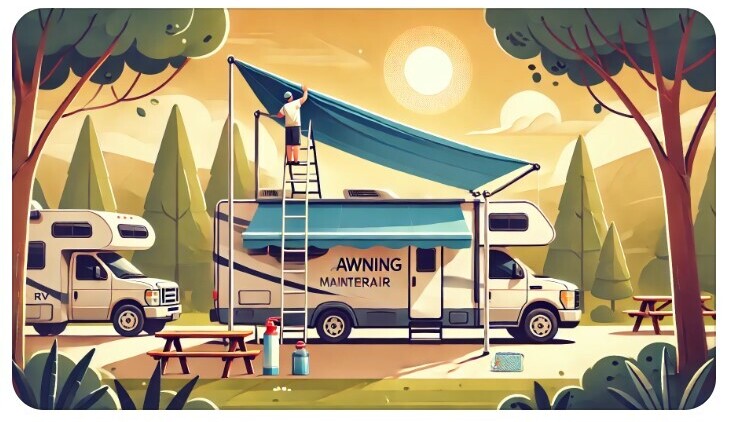
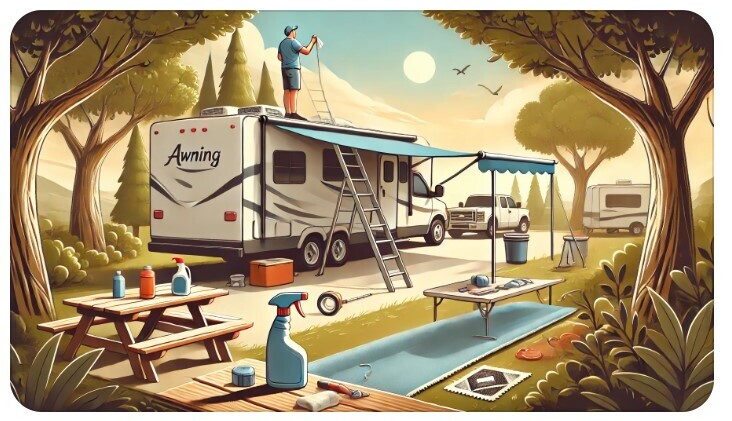


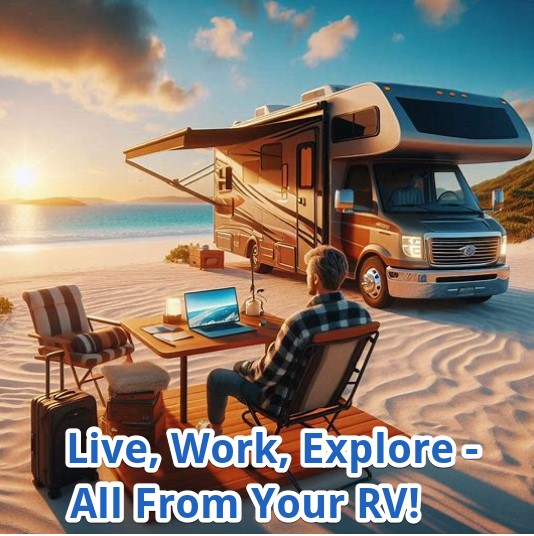
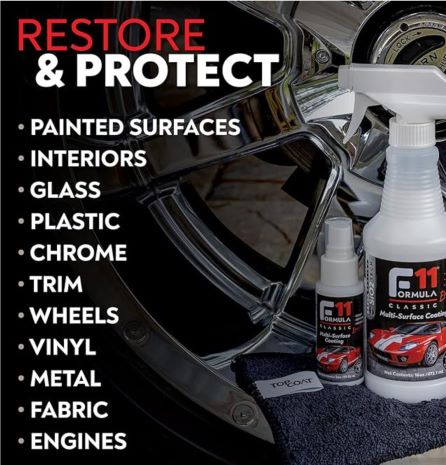
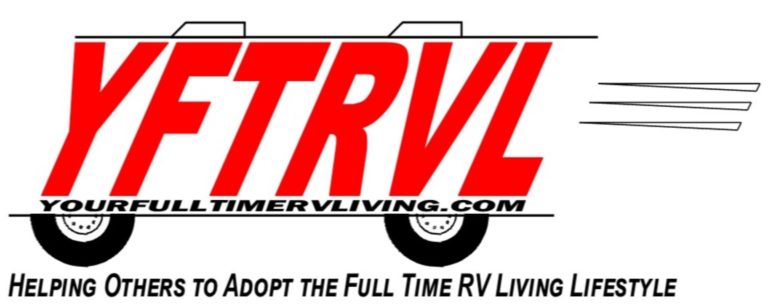



Recent Comments